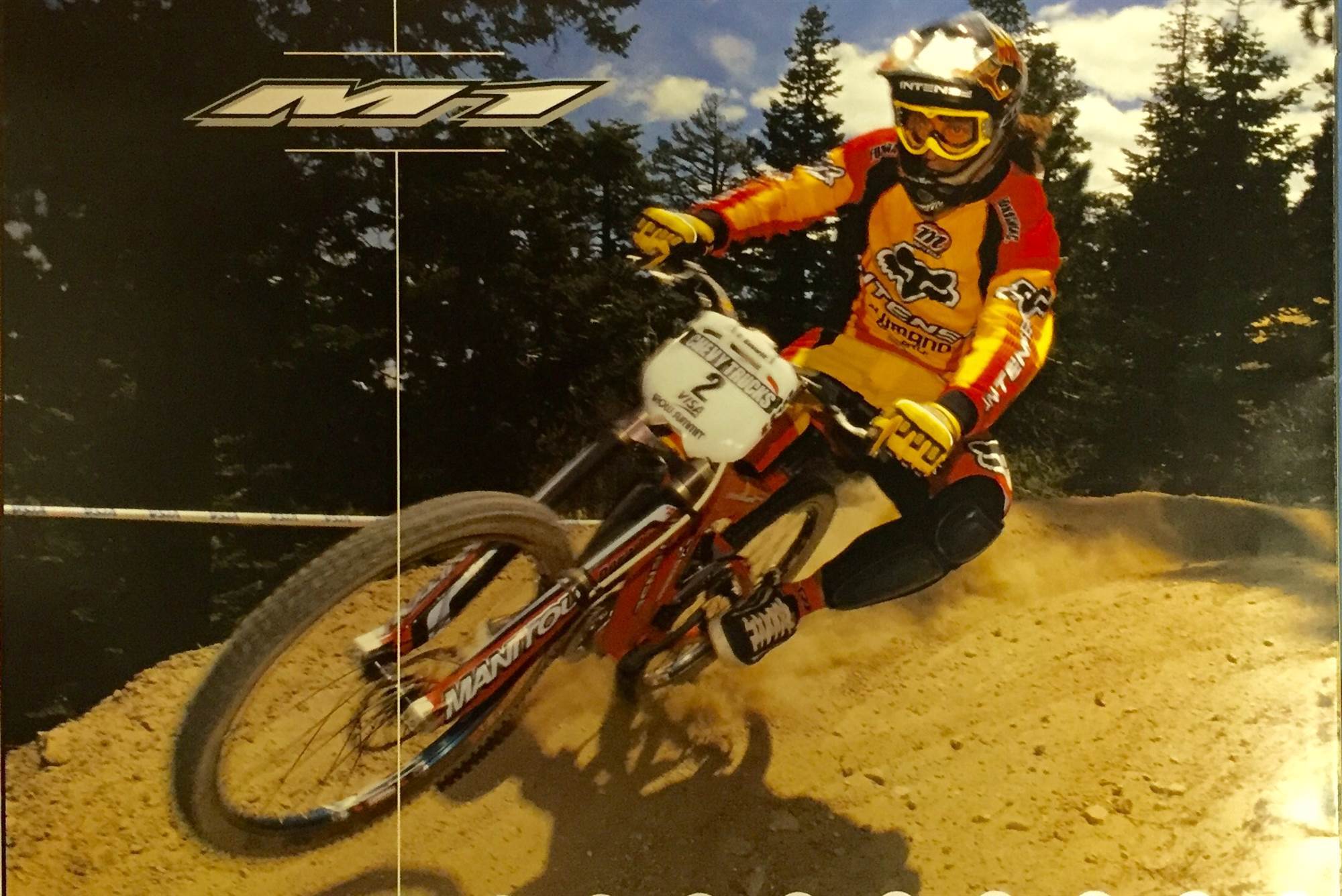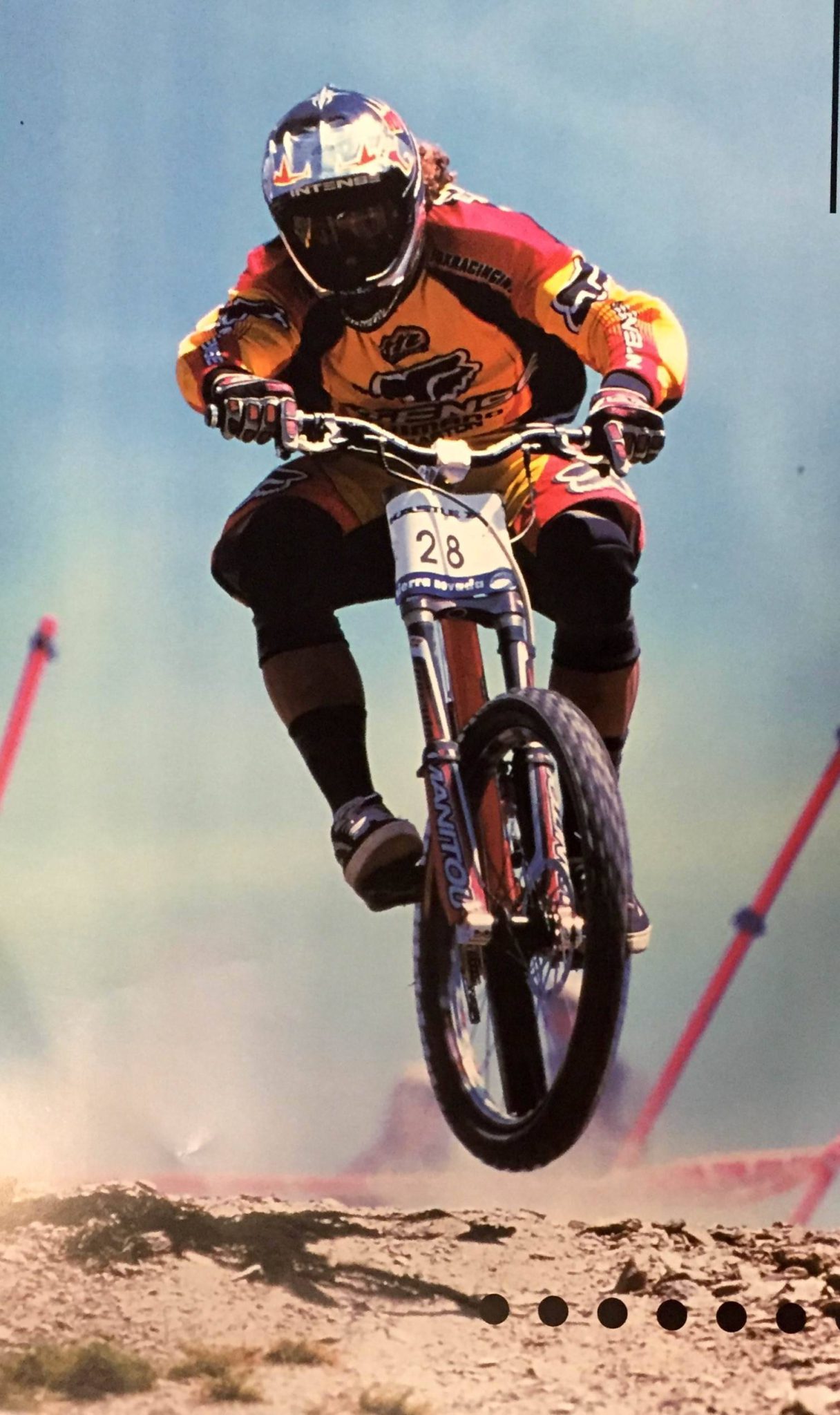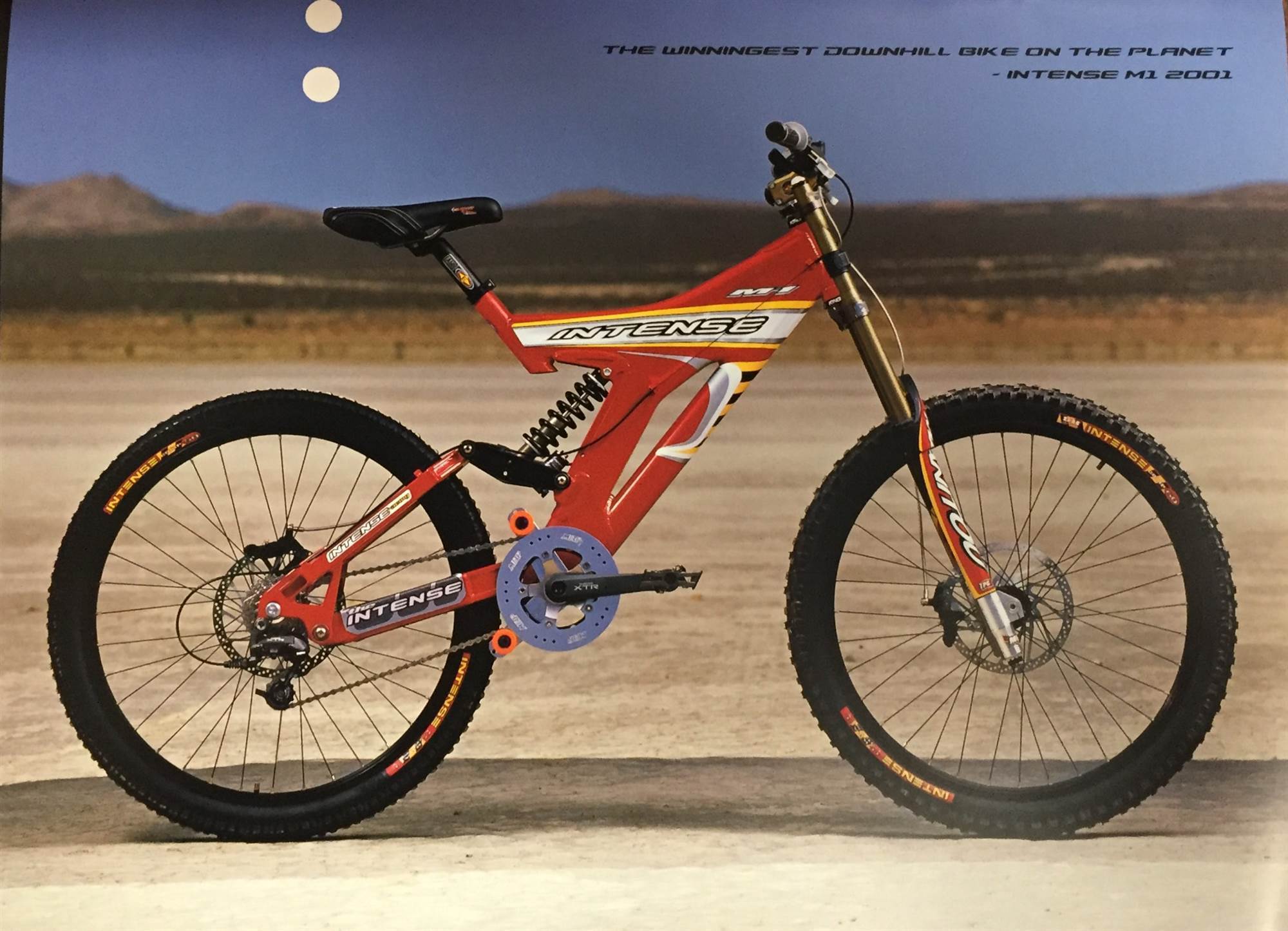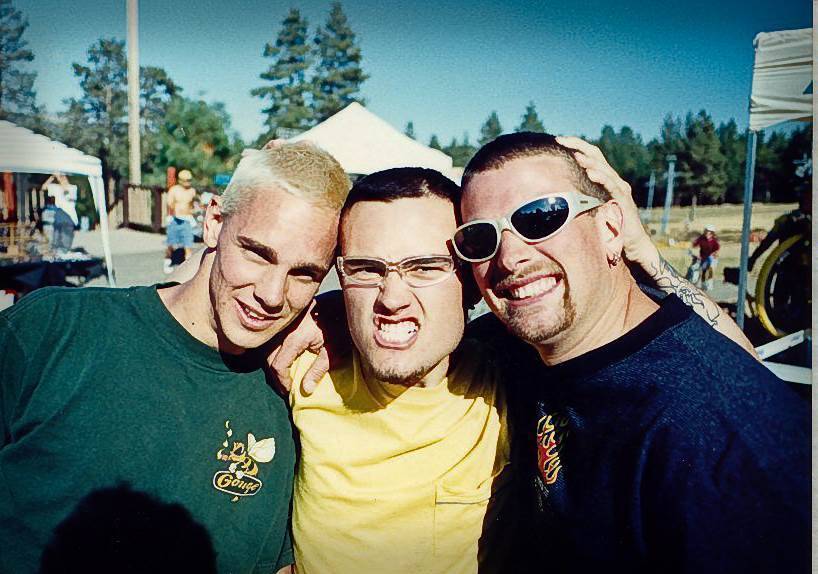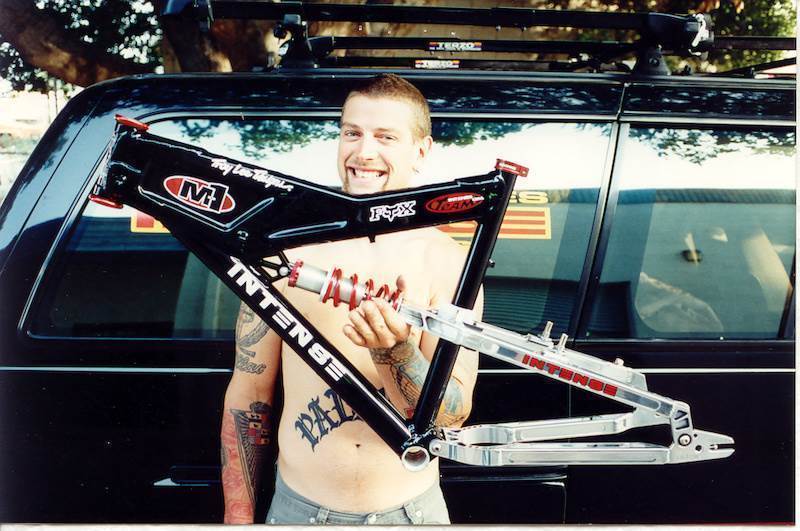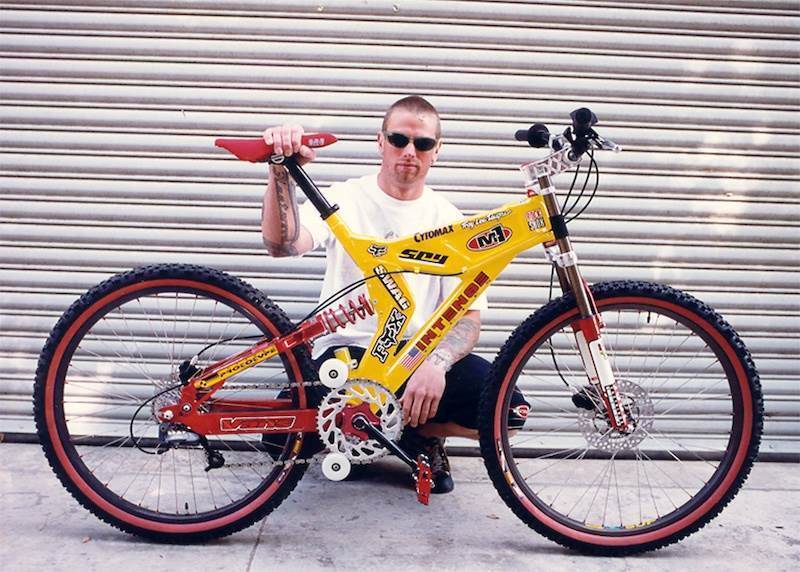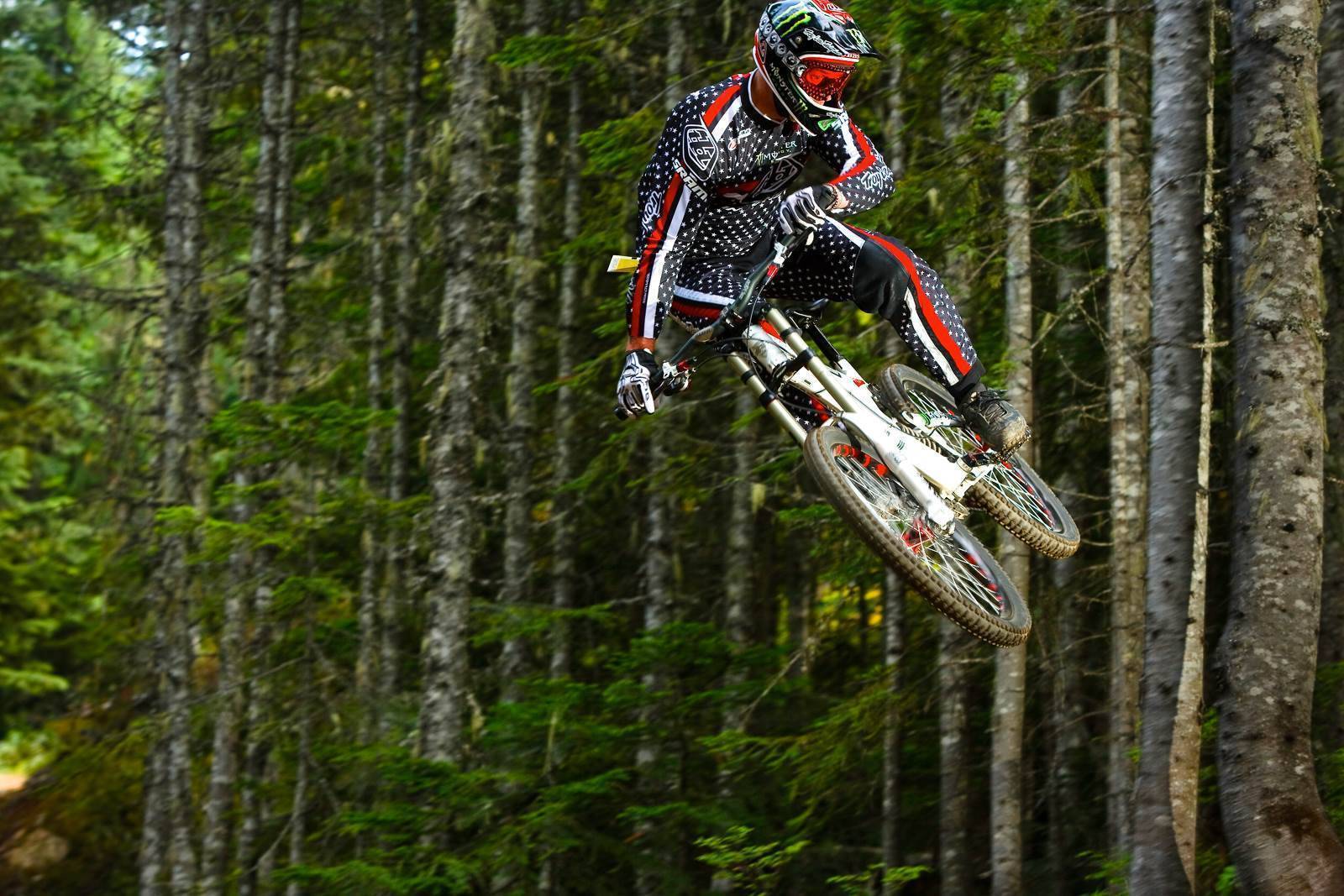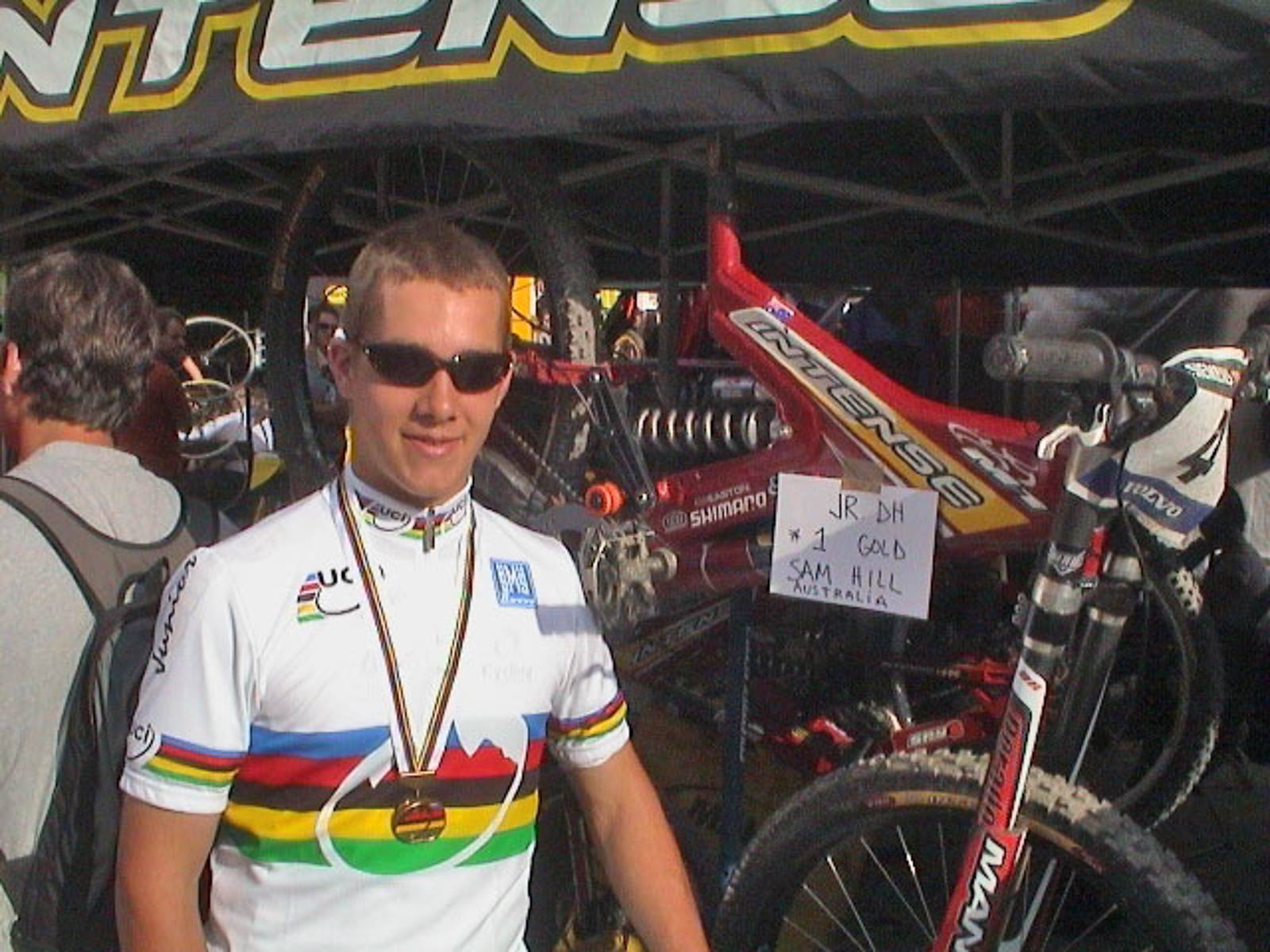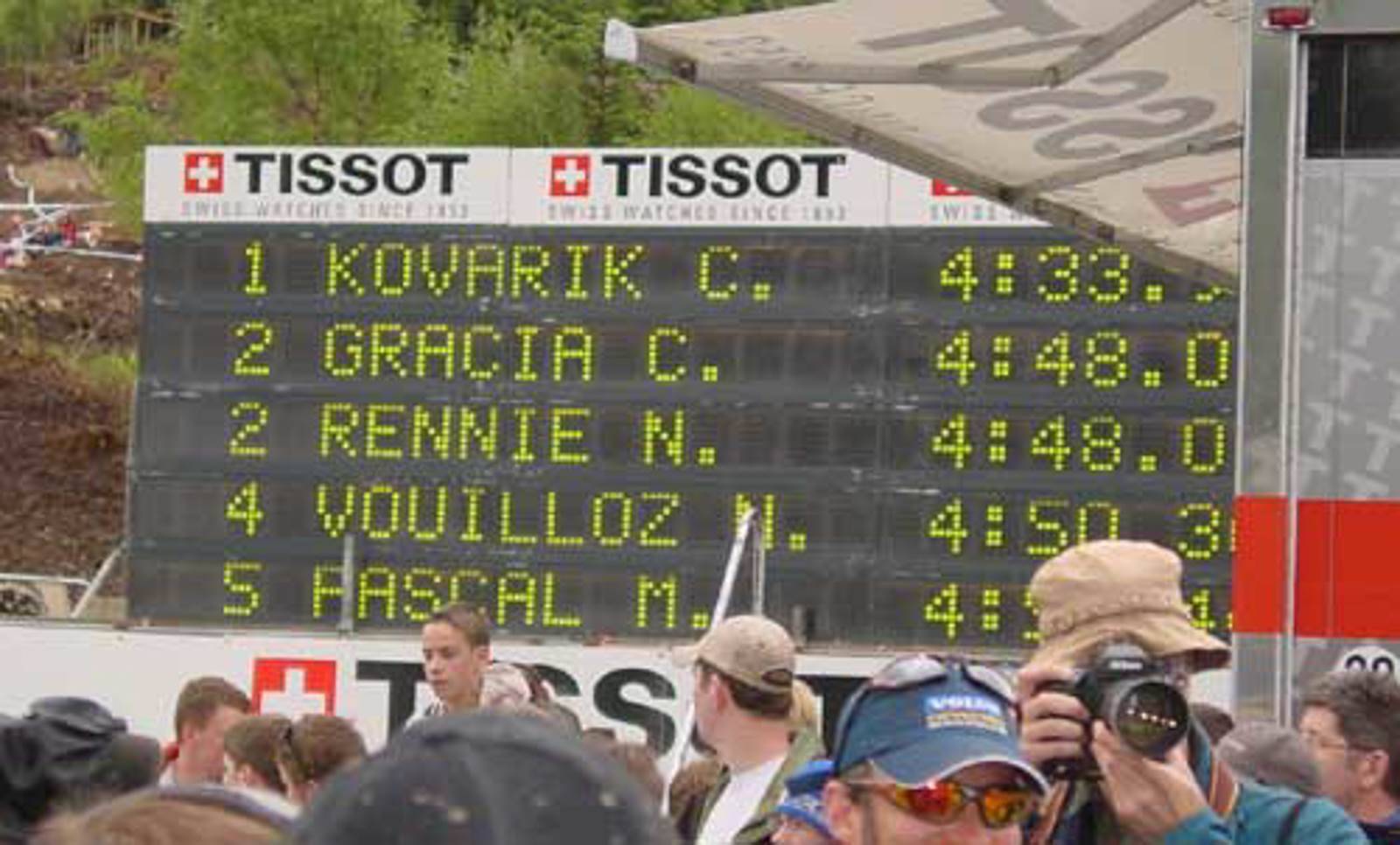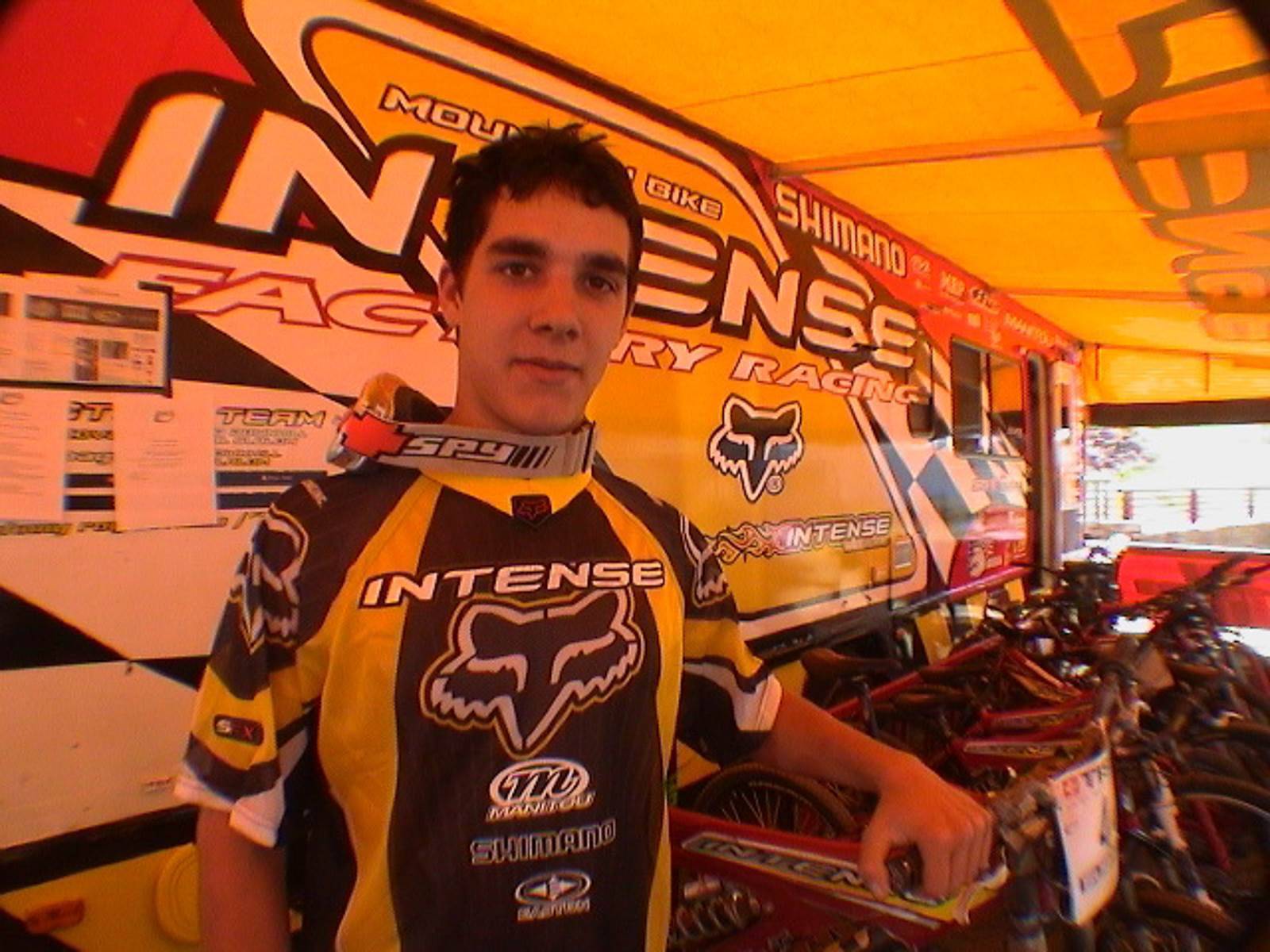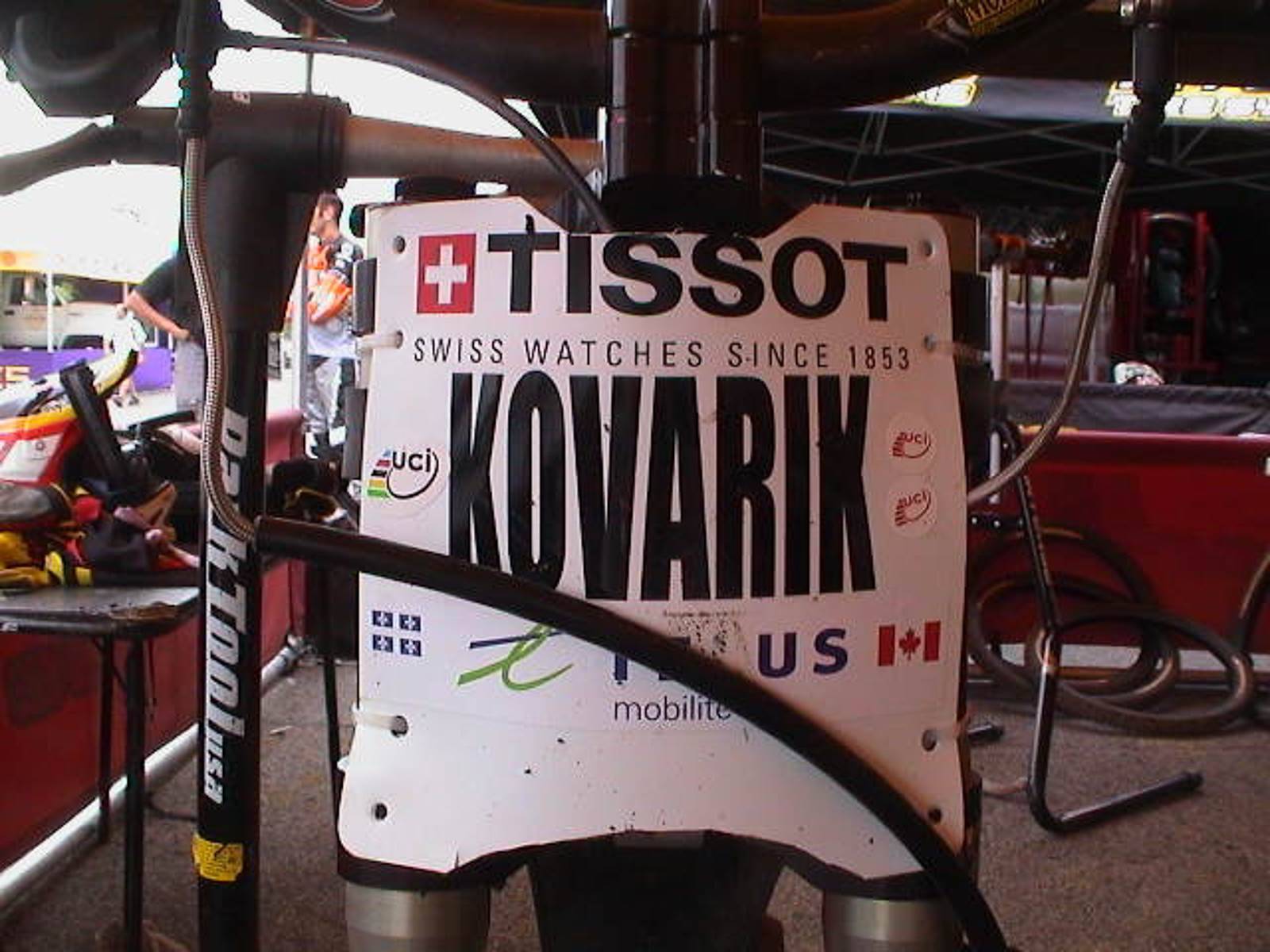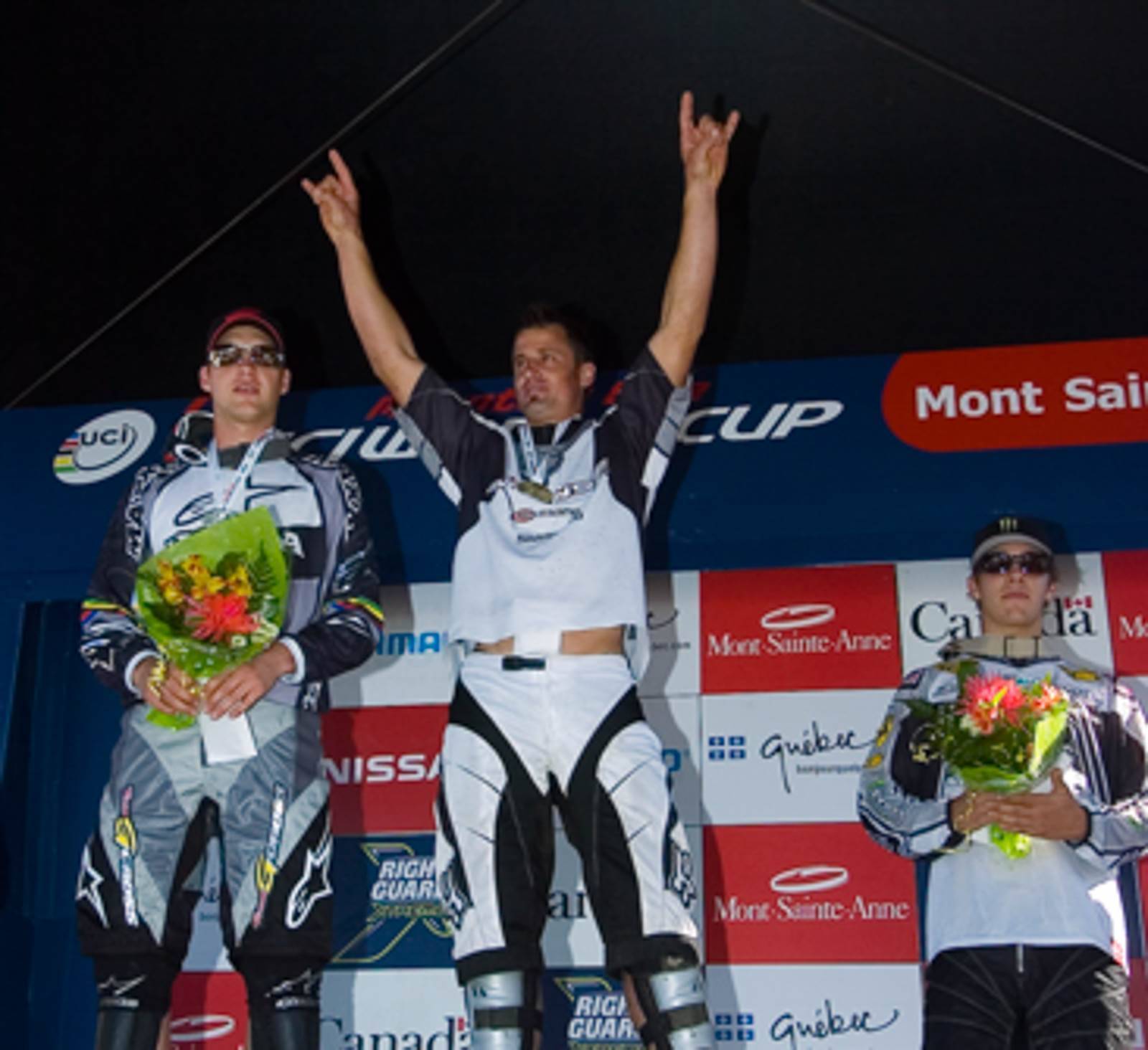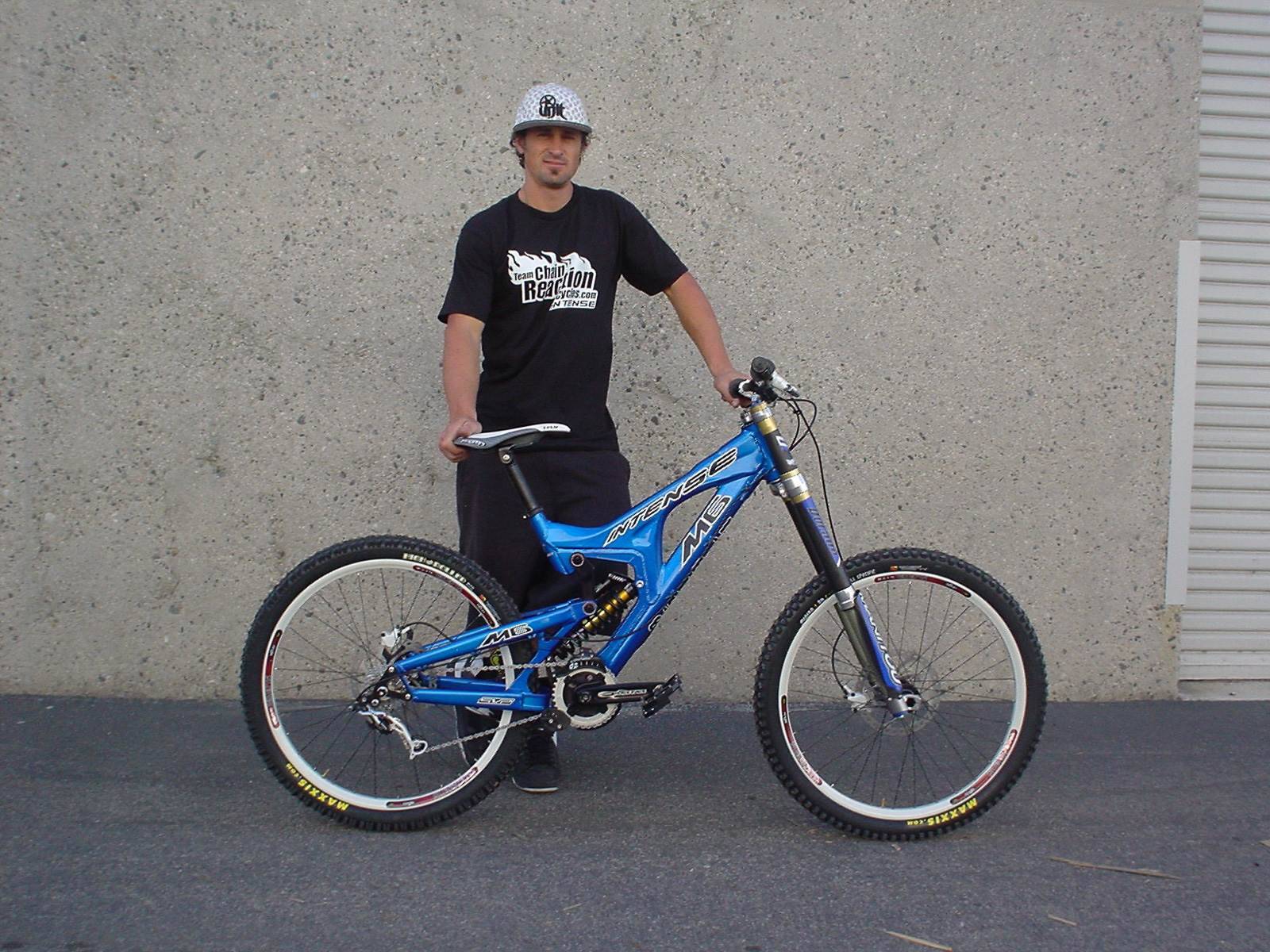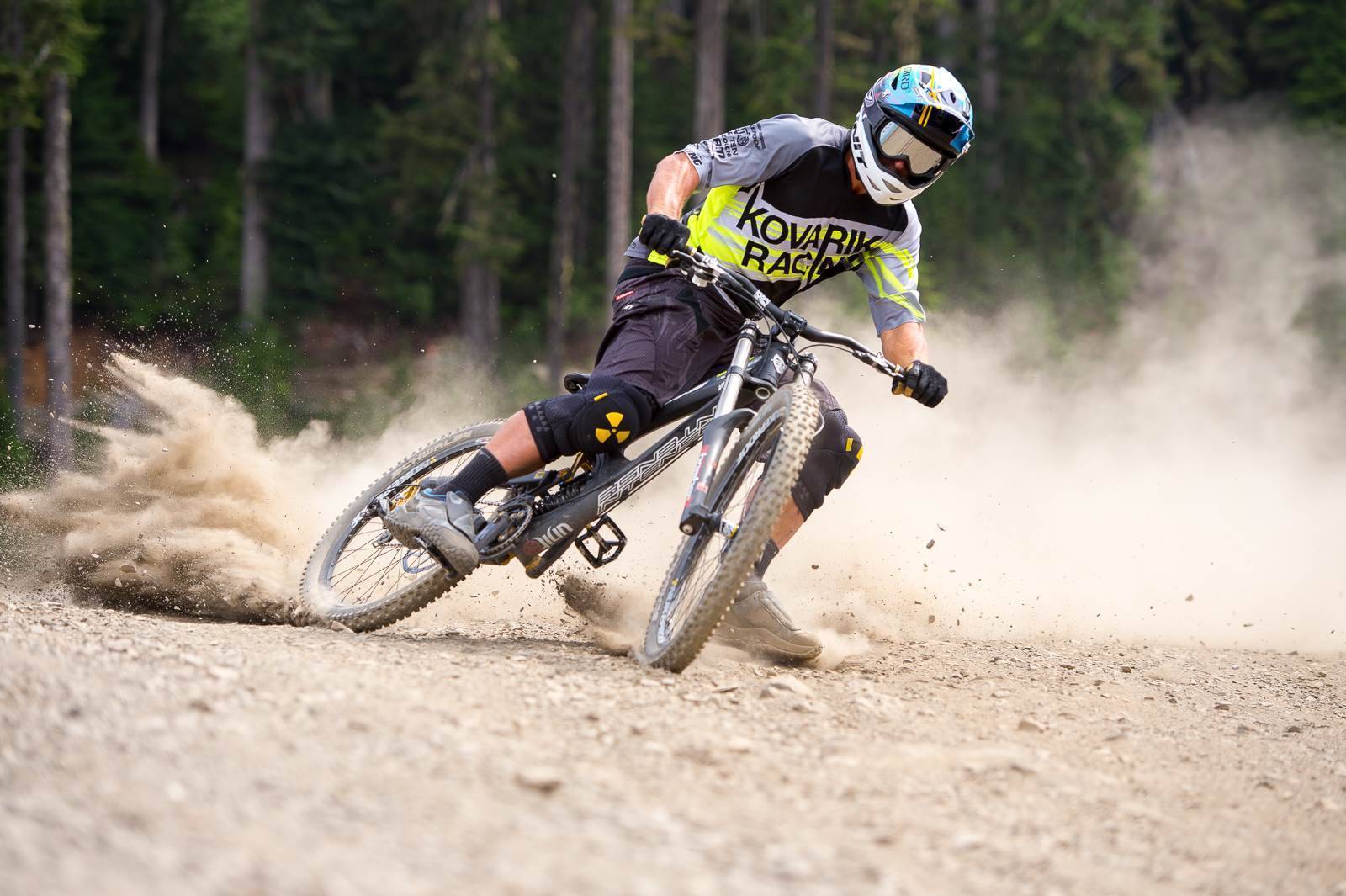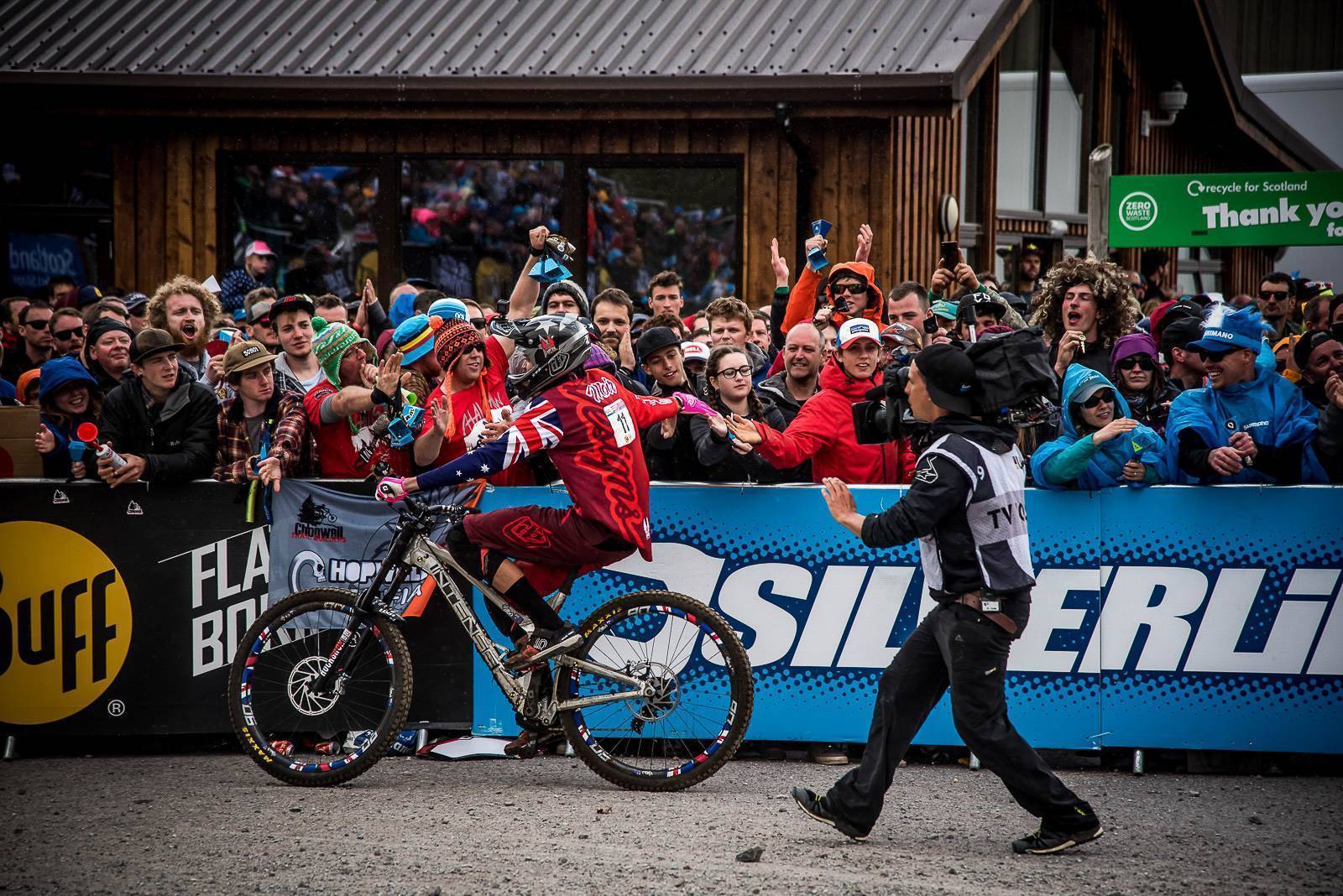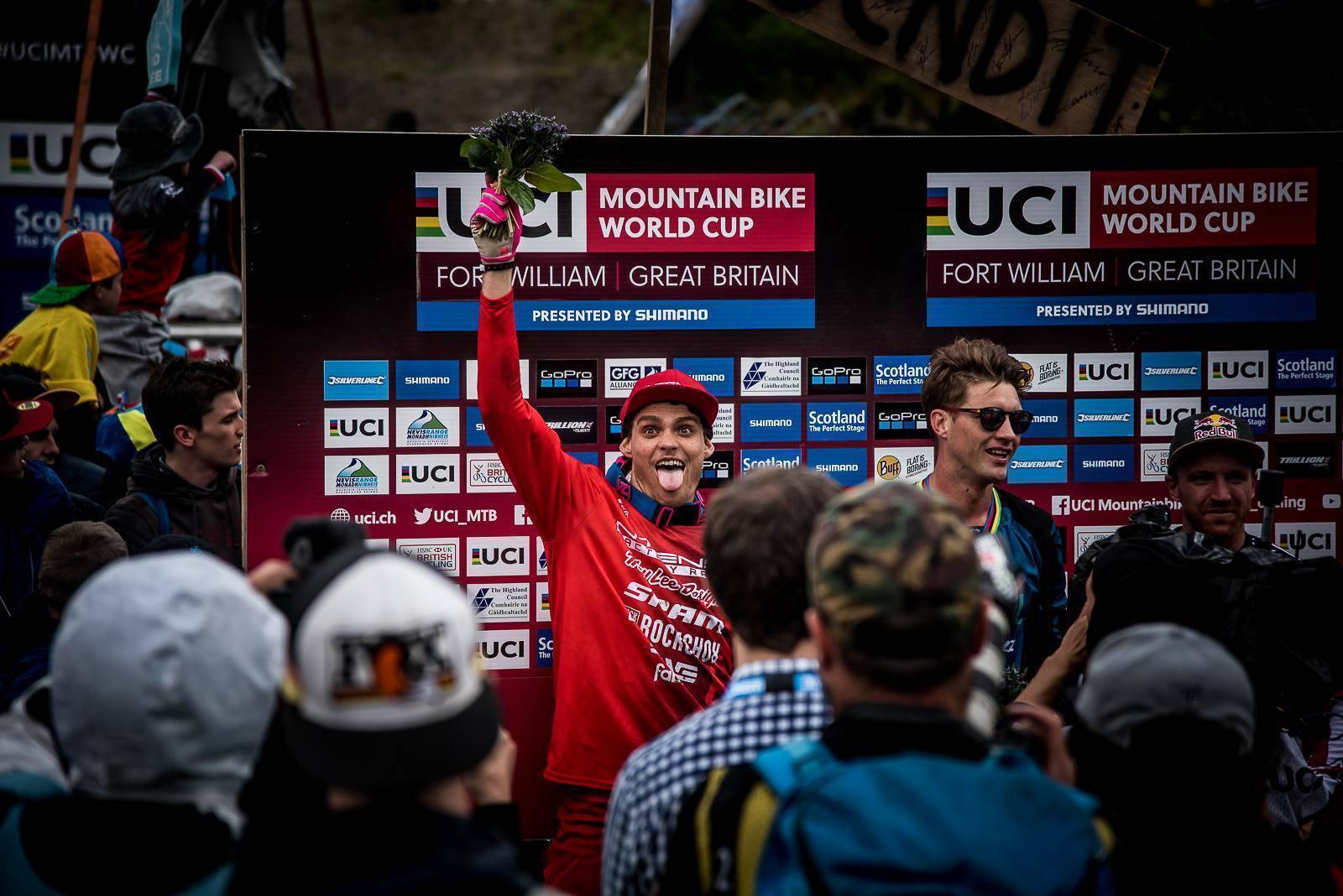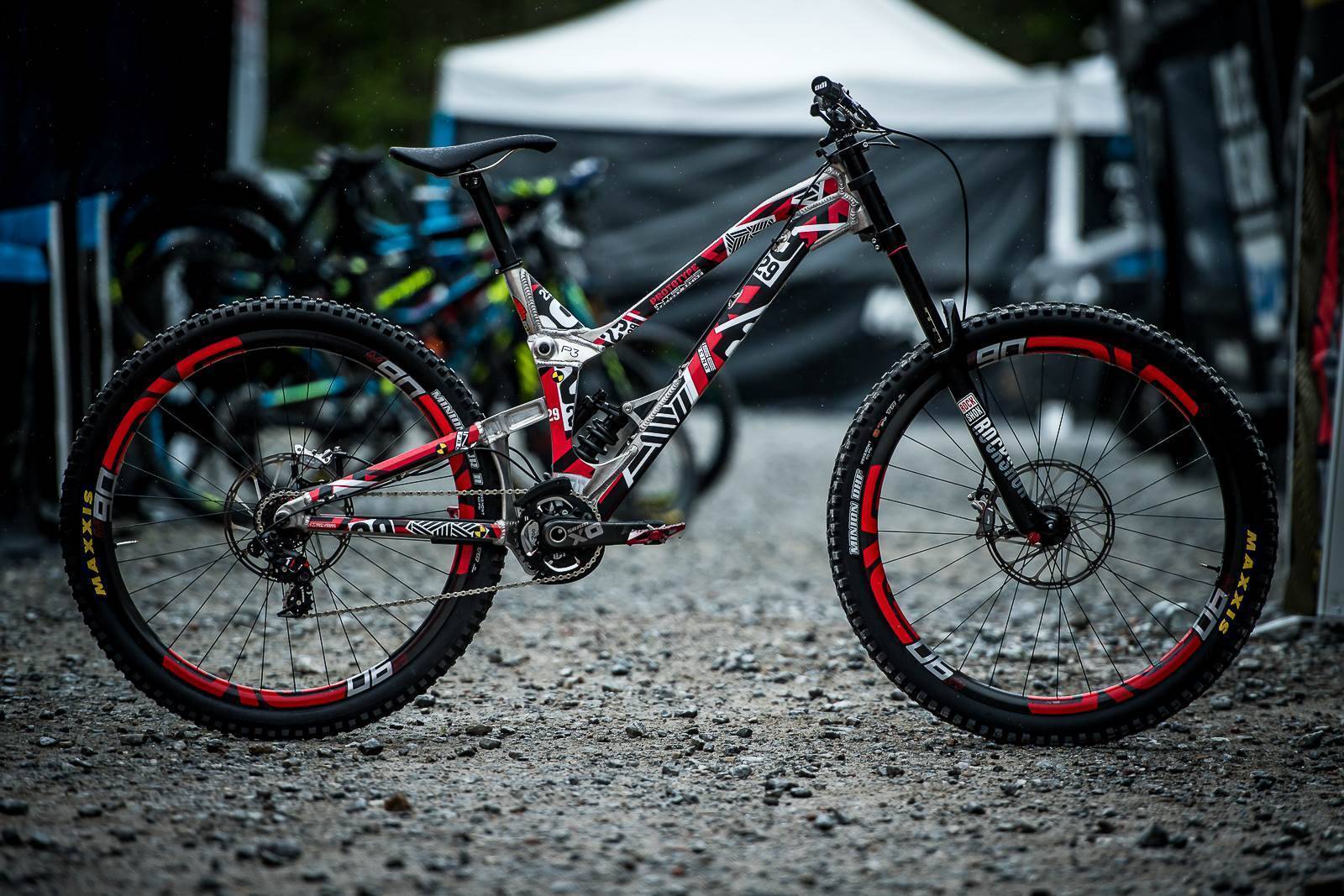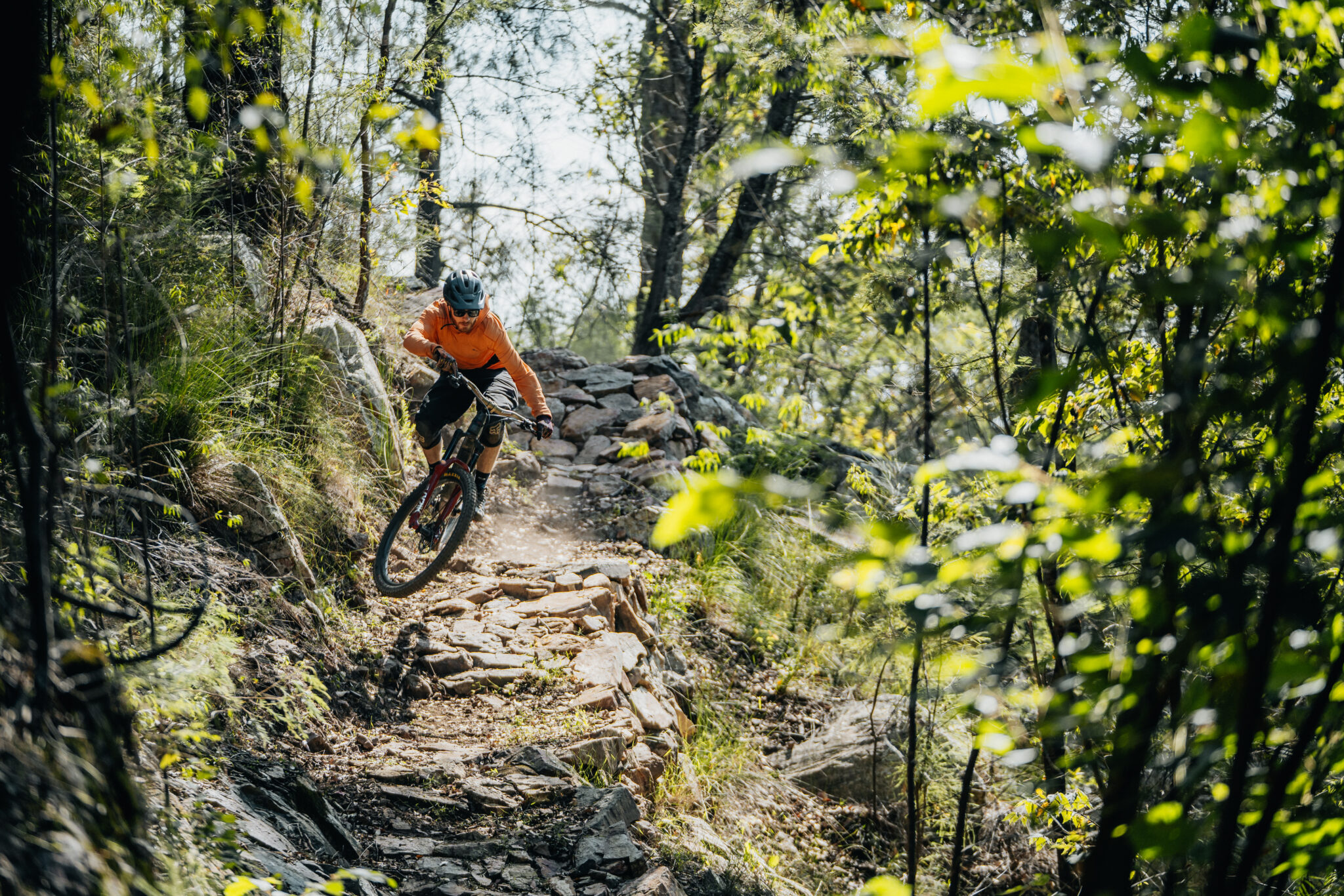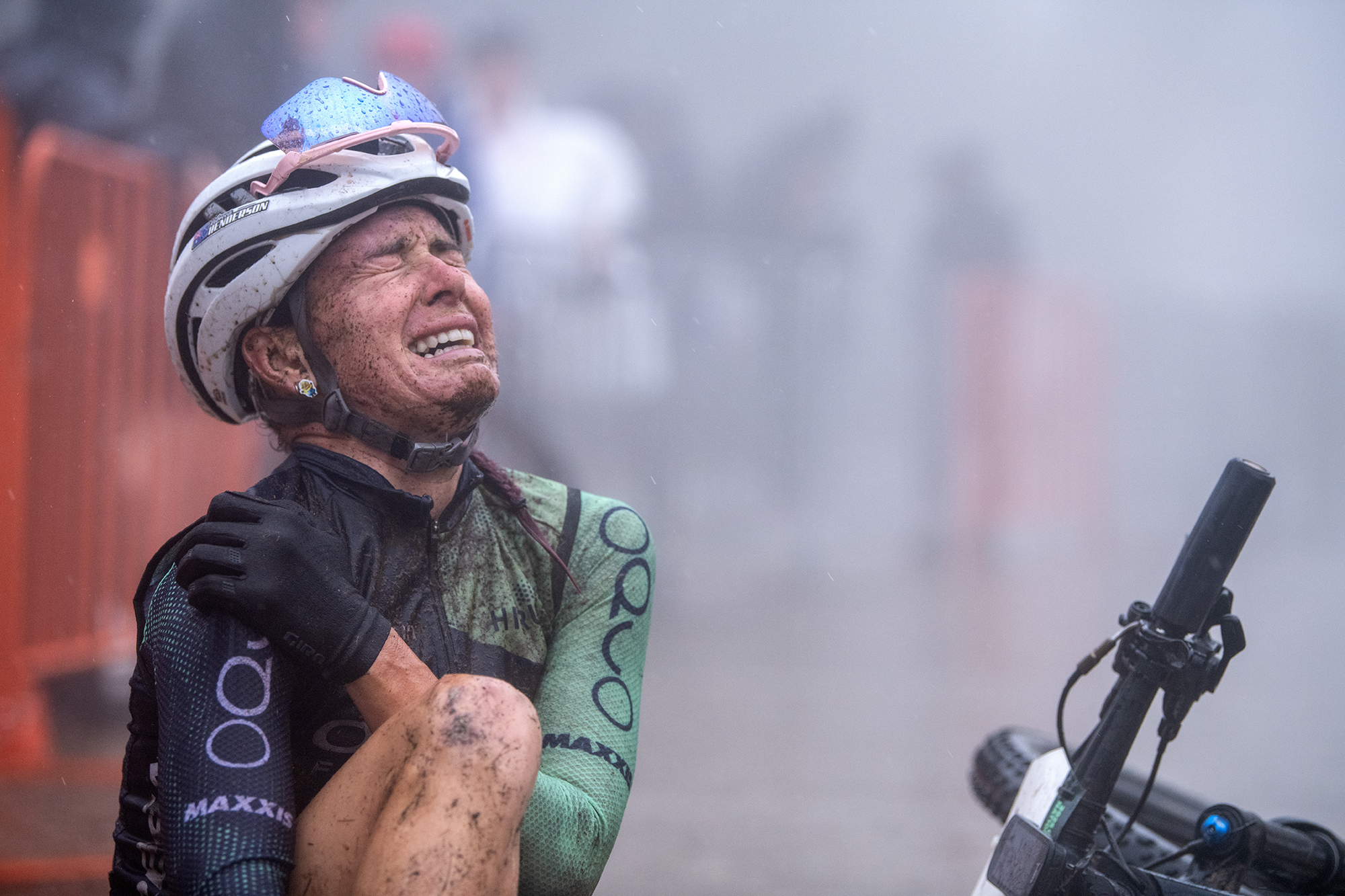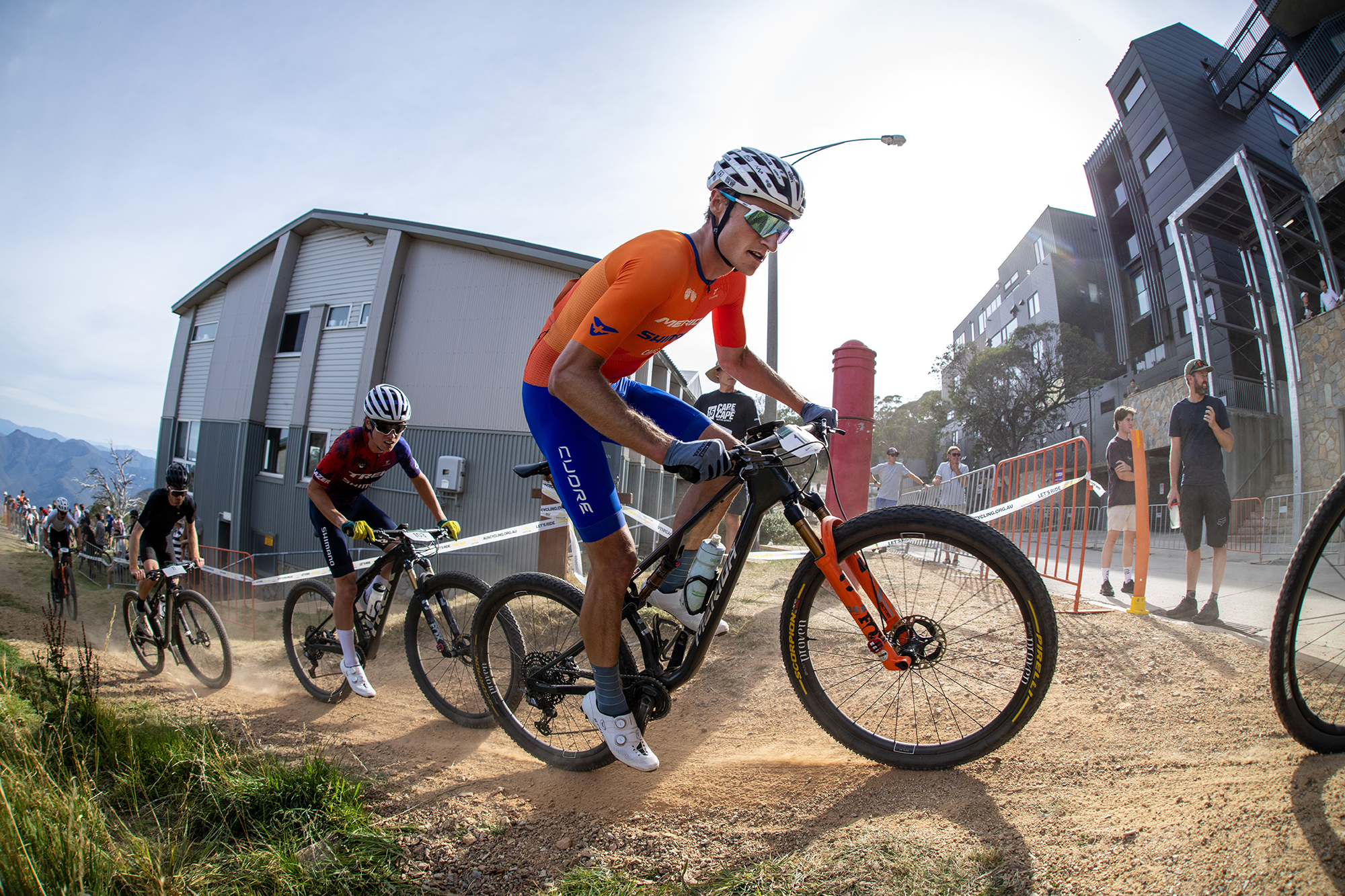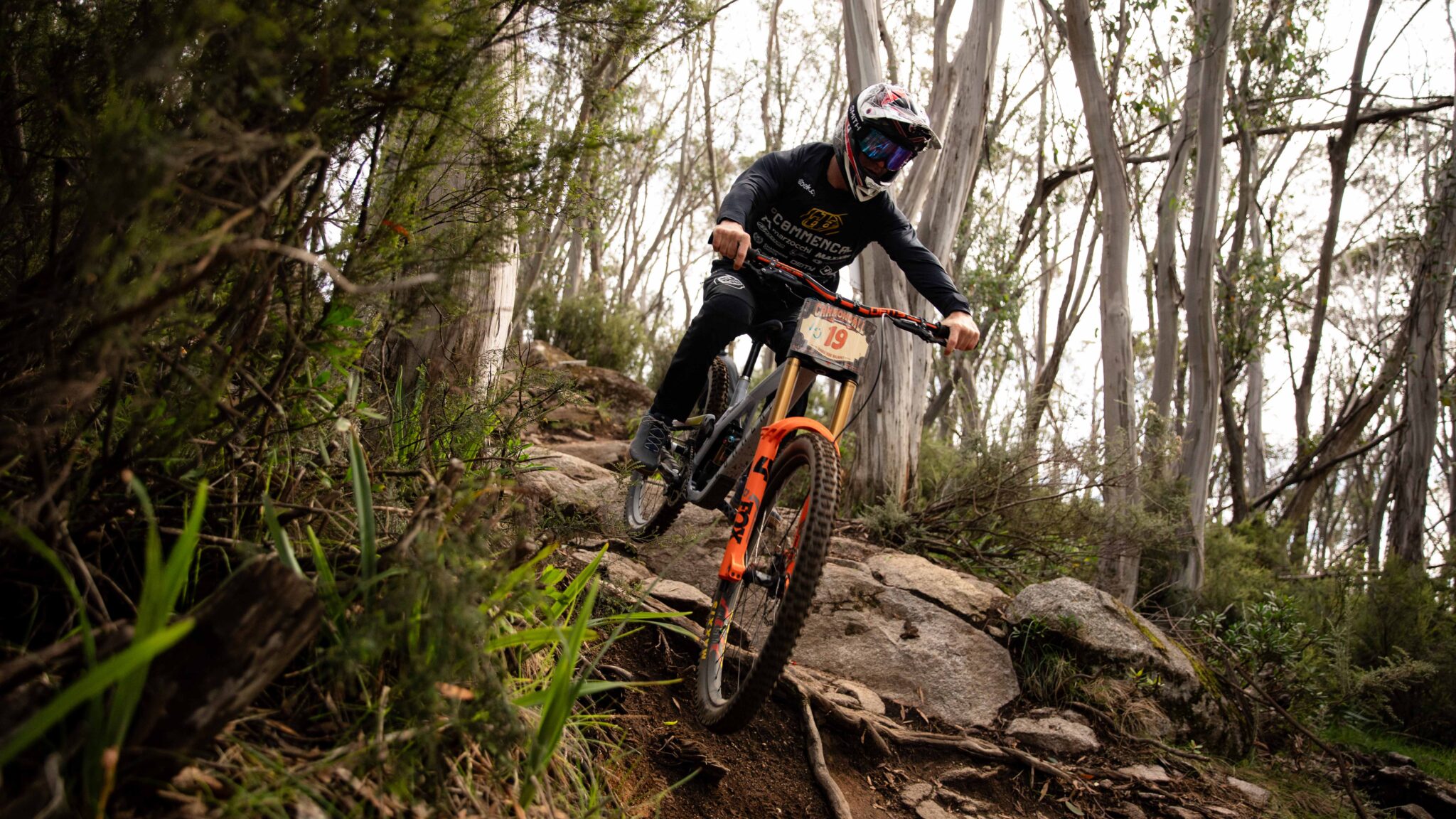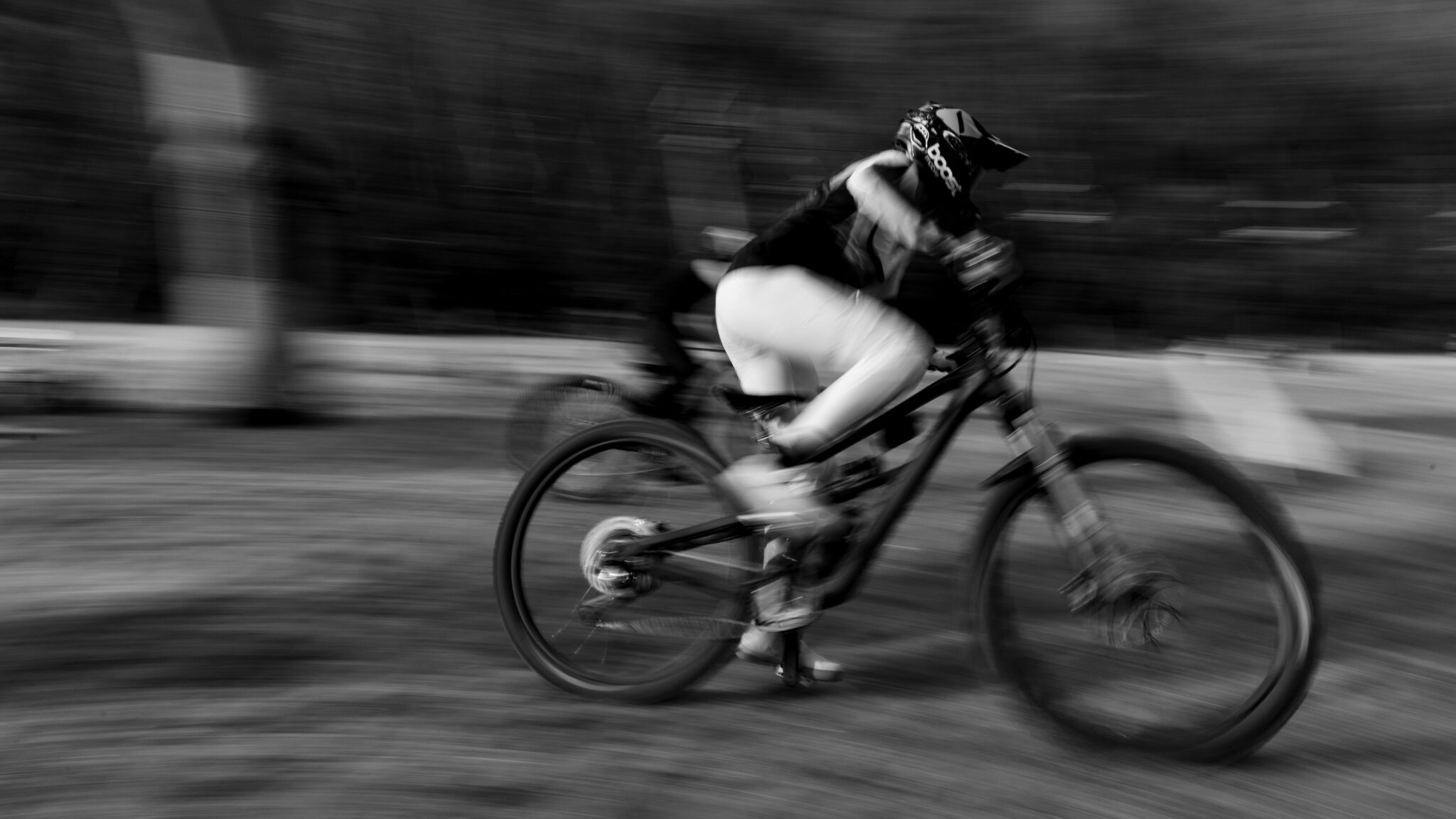Intensely Aussie
Intense Factory Racing – a team born in California more than 20 years ago, but with Australian blood running through its veins almost ever since.
Words: Neil Martin Photos: Intense archive
Fittingly so, perhaps, since it was in Cairns that Intense blew up the entire sport of downhill racing when Shaun Palmer, believed to be just some punk snowboarder, powered the jaw-dropping M1 bike to a stunning second place in the 1996 World Championships.
The Queensland city thus helped propel Intense into the global MTB consciousness and soon there were even more Australian connections with the brand.
A young, upcoming talent from Dandenong in Victoria caught the eye of team boss Jeff Steber and he was determined to get him on the roster. At the same time, an experienced World Cup racer out of Far North Queensland was also looking for a ride. Which is how Chris Kovarik and Michael Ronning were deliberately paired together and went on to cement the brand’s place in the history of the sport.
Kovarik notably crushed the field at Fort William in 2002, winning by more than 14 seconds on an M1, and he’s still an ambassador for Intense to this very day.
But the Australian roots go deeper still, with Sam Hill having won a junior world title in the famous red and yellow jersey and now Central Coast flyer Jack Moir getting podiums for a born-again Intense downhill team that also features Victoria’s Dean Lucas.
For all those reasons you could claim that Intense will be coming “home” in September when the World Championships return to Cairns – the exact location of Palmer’s ride that sparked it all off two decades ago.
What better time, then, to exclusively catch up with Intense owner – and bike-builder extraordinaire – Jeff Steber about those events in Queensland, his thoughts about beetroot on burgers and just why he seems so obsessed with all-things Australia!
AMB: Let’s start at the beginning! Intense went big almost overnight after Shaun Palmer’s second place at the 1996 World Championships in Cairns on the M1. What do you remember about that event?
Jeff Steber: Unfortunately I was not there. I was at the InterBike show at Anaheim in California with my modest little booth.
I remember the day really well because they actually made an announcement over the PA while the show was going on that Shaun Palmer had just taken the silver medal for USA riding for Intense.
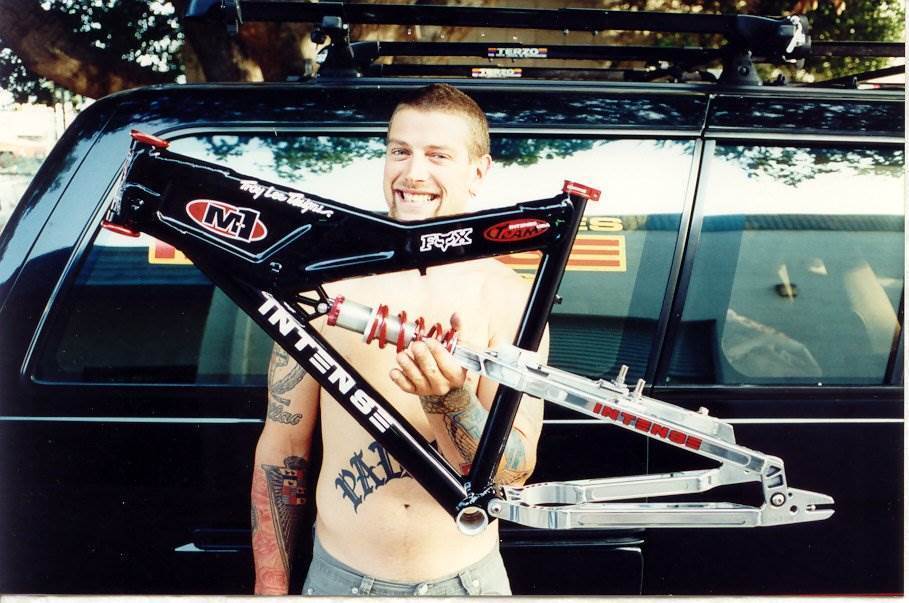
It was that exact moment that I realised that we had properly arrived in the sport. But I always say it’s the most famous second place in mountain bike history.
AMB: What was the direct result for Intense on the back of what Shaun did in Cairns?
Steber: It really put us on the map. After Cairns there was definitely a bigger global interest in Intense. That result gave us a lot of global-brand equity and there was the combination of a really unique-looking bike with this aggressive rider that was wearing motocross-style gear while everyone else was still in lycra and looking like a downhill skier.
AMB: The M1 was a totally radical bike for its day, how did it come about?
Steber: At that time, I came into mountain bike design with a lot of influences from other areas. Everything from aviation and aircraft – I used to build hang gliders – windsurfing, motocross, cars, all that kind of stuff. But I had literally no bicycle fabrication experience at all.
But I think that was actually a blessing because I went at it with a totally different approach. At the time, the big factory teams were literally riding hardtails – John Tomac had a carbon disc on the back and there were bikes with three-inch travel fork on the front.
Even though downhill was quite popular and exciting to watch, the equipment had not advanced. So there was a big opportunity there and then I turned up with this new bike. I just thought, ‘Look, we’re riding this thing off road and the suspension is key.’ But at the same time it has to be efficient and not robbing power from the rider.
AMB: From the very early days, the Intense team has always had a strong contingent of Australian riders. Why is that?
Steber: I think between 1995 and 2000, you had Scott Sharples and Michael Ronning as two of the best Australian downhill riders. They really made an impression on me, both were really technical and really fit.
Then in the late 1990s you had all the young boys coming up behind them, the Crank team of Nathan Rennie and Chris Kovarik and Johnny Waddell.
I looked at them and I called them ‘Soul Riders’. They didn’t necessarily have a training programme or anything, they just rode the s**t out of their bikes all the time. They were fun guys. They rode hard on the track and then partied hard afterwards and that fitted in with the whole Intense brand. It was a natural thing.
AMB: What prompted you sign Chris Kovarik and Michael Ronning to ride together for Intense in 2000?
Steber: I watched Chris ride and he reminded me of that raw power and talent that Palmer had. He left everything out there on the track, he was a menace on the mountain. People just loved to watch him ride, he always took weird lines and was just having a blast.
So we signed Chris and at the same time Michael Ronning was available and looking for a ride. I figured it would be kind of good to have Michael take Chris under his wing a little bit since Michael had a lot of experience and had travelled the World Cup.

Chris was more raw and Michael was more refined. They were very different, but I think it worked because Michael did help.
That first year was a really tough one for Chris because he’d never travelled the world. He was young, hadn’t been away from Australia for that long, he got homesick a bit. But he stayed in our house with my wife and I during the off-season and he became almost like another member of the family.
AMB: How did Chris cope with life on the road while racing?
Steber: What a lot of people don’t realise is there is a lot more to deal with when you are riding World Cups than just the race itself.
There’s the travelling and the change in cultures and the language barrier and the food – and I think Chris really struggled with that in the first year.
The food thing especially was a huge problem! We’d go to a restaurant and the joke was waiting to see what Chris would order. He never knew what to choose and then he’d end up with some weird meal and would say: “F***ing A, what is this s**t?”
And I always remember going to Maribor in Slovenia for a race and Chris being so happy when he found out there was a McDonald’s right next to our hotel, because he knew exactly what he was getting from Maccas.
Chris just lived and breathed riding and all those young Aussie riders at the time were pretty much the same.
AMB: And what about Ronning?
Steber: Michael used to struggle with it a little bit because he was always cleaning up after Kovarik’s wreckage!
After the races there would be some pretty hard partying going on and cars would get trashed or wrecked or needed pulling out of a ditch. Or someone needed to be bailed out of jail.
Michael was five or six years older than the others and he was the responsible one, especially if I wasn’t there, and he had to play that role a little bit.
AMB: So is there something particularly about the Australians that you love?
Steber: The Aussie boys are always there for you when you need them. I think that mentality goes way back to times of war. Every American military guy that I’ve ever spoken to who was in World War Two or Vietnam said that if they knew had some Aussie guys with them, they were thrilled. They just have that game to them and they’re in it for the all. You never had to worry about them because they were just solid and that’s pretty much my experience too in terms of Australian riders.

On top of that, they taught me how to make a pretty wicked Aussie burger with some beetroot and a fried egg in there as well. But I must say, I’ll pass on the Vegemite!
AMB: As well as racing, Chris Kovarik has also played a wider role in helping build the Intense brand. Can you talk a bit about that?
Steber: Back in the day, even when Chris was still racing World Cups, he built a lot of the tracks in the Temecula area where we are based. He is like a human earth mover. He built the 951 trails, the Rainbow trails, the pump tracks and the Intense Gripper track that’s still used today by our guys when they are training.
Chris still does a lot of product testing for us. If you give him a prototype and he can’t break it or find something wrong with it then you know it’s pretty solid.
AMB: And Kovarik produced one of the most amazing results ever in DH history back in 2002 when he beat the field by 14.02 seconds. What do you remember about that?
Steber: I have a picture of the scoreboard at the Fort William finish line in 2002. It’s a pretty good gap!
It was interesting because the conditions were absolute s**t. Chris was a flat pedal guy back then and that was one of the first races when he wore the Intense Impact sticky-rubber shoe that ultimately became the Five Ten.
I think it played a lot to that result, having flat shoes and not slipping off his pedals and then of course having that absolutely perfect run.
I don’t know if there has been a win like that before or since. And what was even crazier is that I think Nathan Rennie and Cedric Gracia were actually tied for second place – 14 seconds back!
AMB: Another Aussie rider you had in the team was Sam Hill when he was a junior. Could he have been another long-term Intense star from Down Under?
Steber: In 2002 he won his junior downhill gold medal riding for the Intense team in Kaprun in Austria. We tried to keep Sam on the programme for the following year and to this day I still don’t know exactly what happened with the negotiations.

We had put down a good offer and then someone else countered, but we never even got the opportunity to re-counter and next thing we heard he had signed with the Mad Catz team.
We always had the intention of signing him, but it just didn’t happen. I always feel that Sam should have been on the Intense programme after juniors with Chris as his senior. Sam was pretty young at the time and I don’t hold anything against him. He reminded me a lot of Chris in those early years – he was pretty naïve and innocent and just wanted to ride his bike.
AMB: After a slight lull with the Intense team, you’ve now come back with a vengeance and, of course, have a couple of Australians in the team!
Steber: We’re realising that our brand is really all about racing. We’re developing the Intense Factory Racing programme again and putting a lot of energy into it.
We’ve now got Dean Lucas and Jack Moir on there and they are both great guys. They’re just typical Aussie boys who love riding their bikes.
It’s kind of interesting and maybe there is a reputation among Australians that means they fit well with the Intense racing team.
Jack Moir is quite fit and a good on-site rider, meaning he can just turn up and rip a trail without having seen it before. He gets up to speed pretty quick.
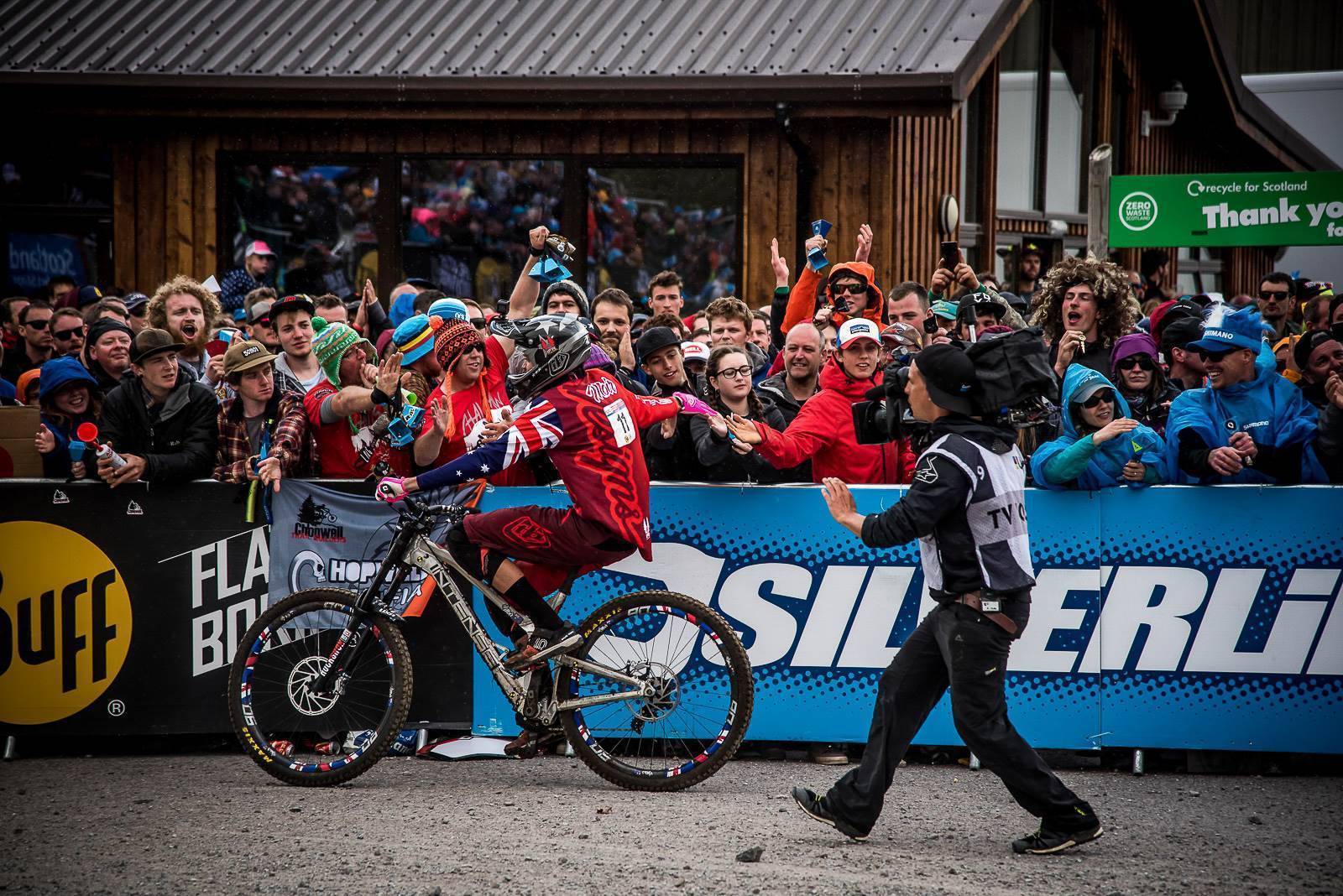
AMB: And to complete the circle, we’re now looking forward to another World Championships in Cairns in September. Anything special up your sleeve to mark the occasion given the significance of the 1996 event in the Intense story?
Steber: I’m sure it would be cool for Shaun Palmer to go back to Cairns, especially if they had that shark mouth at the start gate again!
We’ve been talking about him being in Cairns this year and it’s fizzled out a bit, but I’ll try to instigate getting him down there.
THE INTENSE TIMELINE
|
1994 |
|
1995 |
|
1996 |
|
1997 |
|
2000 |
| 2002 Chris Kovarik wins World Cup event at Fort William by more than 14 seconds. Sam Hill rides M1 to glory in the Junior World Championships. |
|
2003 |
| 2006 Production of the M6 begins, with the M6 EVO featuring as a race team bike only. |
|
2009 |
|
2010 |
|
2015 |
|
2016 |
|
2017 |

